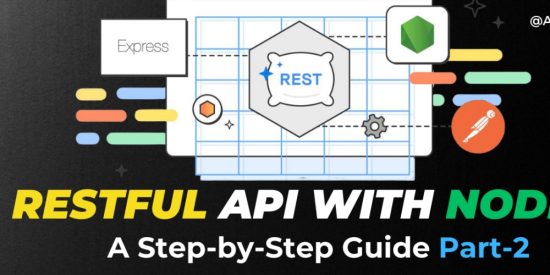Introduction
Testing is a critical aspect of building reliable and robust APIs. In this blog, we will explore the process of testing a RESTful API built with Node.js and Express. As we have implemented a basic RESTful API in a previous blog, we will now focus on verifying its functionalities and ensuring that it behaves as expected.
Testing an API involves validating various HTTP requests and their corresponding responses. By thoroughly testing each API endpoint, we can identify and fix potential bugs, handle edge cases, and improve the overall reliability of our application.
In this tutorial, we will cover how to perform unit tests, integration tests, and end-to-end tests for our API. We will use popular testing libraries such as Jest and Supertest to simplify the testing process and ensure our API’s functionality meets the specified requirements.
Let’s dive into the exciting world of testing APIs and ensure our application stands strong against any challenges it may encounter.
Testing GET Request
To retrieve all users, send a GET request to http://localhost:3000/api/users using tools like Postman or cURL. You should receive a JSON response containing an array of all the users in your database:
[
{ "id": 1, "name": "John Doe", "age": 30 },
{ "id": 2, "name": "Jane Smith", "age": 25 }
// Additional users will be listed here
]
Testing GET Request for a Single User
To retrieve a specific user by ID, send a GET request to http://localhost:3000/api/users/:id, where :id is the user’s ID you want to retrieve. For example, to get user with ID 1, you can send a GET request to http://localhost:3000/api/users/1. The server will respond with the JSON representation of the user:
{ "id": 1, "name": "John Doe", "age": 30 }
If the user ID does not exist in the database, the server will return a 404 status code with the following message:
{ "message": "User not found" }
Testing POST Request to Create a New User
To create a new user, send a POST request to http://localhost:3000/api/users with the following JSON payload in the request body:
{
"name": "New User",
"age": 28
}
The server will respond with a 201 status code and the JSON representation of the newly created user, including the assigned ID:
{ "id": 3, "name": "New User", "age": 28 }
If the request payload is missing the name or age fields, the server will return a 400 status code with the following message:
{ "message": "Name and age are required" }
Testing PUT Request to Update an Existing User
To update an existing user, send a PUT request to http://localhost:3000/api/users/:id, where :id is the user’s ID you want to update. For example, to update user with ID 1, you can send a PUT request to http://localhost:3000/api/users/1 with the following JSON payload in the request body:
{
"name": "Updated User",
"age": 35
}
The server will respond with the JSON representation of the updated user:
{ "id": 1, "name": "Updated User", "age": 35 }
If the user ID does not exist in the database, the server will return a 404 status code with the following message:
{ "message": "User not found" }
If the request payload is missing the name or age fields, the server will return a 400 status code with the following message:
{ "message": "Name and age are required" }
Testing DELETE Request to Delete a User
To delete a user, send a DELETE request to http://localhost:3000/api/users/:id, where :id is the user’s ID you want to delete. For example, to delete user with ID 2, you can send a DELETE request to http://localhost:3000/api/users/2.
If the user ID exists in the database, the server will respond with a 204 status code, indicating that the user has been successfully deleted.
If the user ID does not exist in the database, the server will return a 404 status code with the following message:
{ "message": "User not found" }
Conclusion
In this tutorial, you learned how to build a simple RESTful API using Node.js and Express. You created routes to handle various CRUD operations for a collection of users and tested the API endpoints using tools like Postman or cURL.
RESTful APIs are the backbone of modern web applications, allowing seamless communication between the frontend and backend. With this knowledge, you can now expand your API to handle more complex data, add authentication, and integrate with databases to create more robust applications.
Remember to always follow best practices, such as error handling, validation, and security measures, when developing APIs for production applications.
Happy coding!
Connect with me on Twitter, Linkedinand GitHub to stay updated and join the discussion!






